Friday, November 16 2012
We have received several emails from our subscribers asking how a model like MIPS3/MF, which trades an average of 15 times/year, can issue 2-3 trade signals in one week.,
The happens because:
1) the 15 trades/year for MIPS3/MF is an “average”, which means in some years it can trade
only 9 times (like in 2009) and in other years it may trade as many as 24 times (like in 2011), and
2) in any time frame, MIPS can trade 2-3 times in one month, and only one time in 3-5 months
(like at the end of 2010).
The main reason for this is the MIPS models have multiple “stop-gap” and “safe-guard” measures built in that “test” the integrity and accuracy of each and every signal. Specifically, for a few days after every trade, MIPS checks to see if the recent signal really is on the right track. These stop-gaps and safe-guards are NOT simply “stops” as we know them, but are proprietary algorithms that check to see if the SPY is following the expected price/volume pattern predicted by the algorithms in the recent signal.
Normally, the MIPS models issue new signals based on many indicators/algorithms that believe that they have found a directional change in the market, like an “Inflection Point” or a “Key Reversal”, etc. When MIPS issues a signal based on the consensus of these algorithms, it then spends the next few days verifying the “expected outcome”. If the “expected outcome” is not met, MIPS will either (a) reverse its position or (b) get out entirely (i.e., go to cash).
See the example below for Inflection Points
Click here for animated example =>
http://en.wikipedia.org/wiki/File:Graph_of_sliding_derivative_line.gif

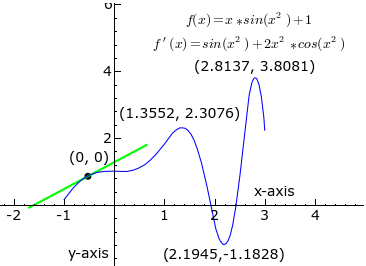
In this graphic animated presentation from Wikipedia above, imagine that the curved blue line is the price of the SPY and the traveling lines are the “slope” of this price curve at any point on the curve. Therefore,
1) when the slope is pointed up, the SPY is in an upward pattern, and
2) when the slope is pointed down (red line), the SPY is in a downward pattern, and
3) when the slope is flat or zero (black line), the SPY is in a flat or sideways pattern, and
is signaling the potential of having reached an “Inflection Point”.
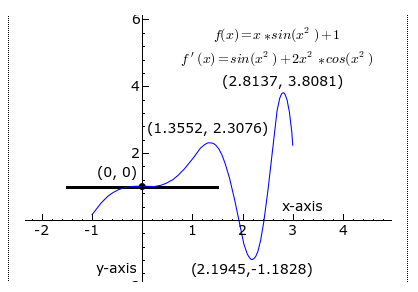
In the Wikipedia example above, at first the SPY is going up and the slope is pointing up (green up-line). When the slope turns flat/zero like it does near the Y-axis (black flat line), MIPS is looking for a change in direction in the SPY price from up to down (Inflection Point), and could signal a short signal. If the slope stays flat for a while or if the slope turns back up instead of turning down, MIPS could reverse its short signal and either (a) go long, or (b) go to cash. If MIPS does issue a cash signal and the slope then continues back up from there (as in the Wikipedia example as it crosses the Y-axis), MIPS will ultimately go long again. Over time, MIPS will go through tough periods trying to find a new trend and goes through 3-4 trades of –3% to +3%, but MIPS will ultimately find an intermediate trend (up or down) that will make us +10 to +15%, and the cycle repeats.
These “safety” algorithms above result in:
1) Negative - a few more trades than normal, and
2) Positive - greatly reduced losses on incorrect signals.
This can be seen in the MIPS long-term trading results below:
Winning/Losing Trades Average Gain/Loss
Winning Trades = 65% +3.0% Avg Gain/Trade
Losing Trades = 35% - 1.1% Avg Loss/Trade
After 100 trades, the win/loss ratio above equates to 195% up (65 x 3%) and 38.5% down (35 x 1.1), or 156% up (not compounded). Compounded, this would be in the range of 250% up (or more). And this happened in a market that was up only about 1% after 8 years and 100 MIPS trades.
We are not certain how many timing models have built in stop-gaps and safe-guards like MIPS, but we know a very large number of them that don’t.
Friday, November 16 2012
MIPS Members:
The SPY decisively broke its 200-day EMA on Wednesday, and the DIA and QQQ have been trading below their 200-day EMAs for the last 7-8 trading days. Thus far, of course, the market has not shown any signs of a rebound (see graph immediately below). All MIPS models have been short since late October, so let's keep our eyes and ears on government action regarding the "Fiscal Cliff". Remember, just a little good news can send an oversold market like this one straight up, if even for a short period of time and a "small" rally. And, don't forget about the Santa Claus rally the we wait for each year. With all of this to assimilate, we need to rely on new signals from the MIPS models for future guidance.
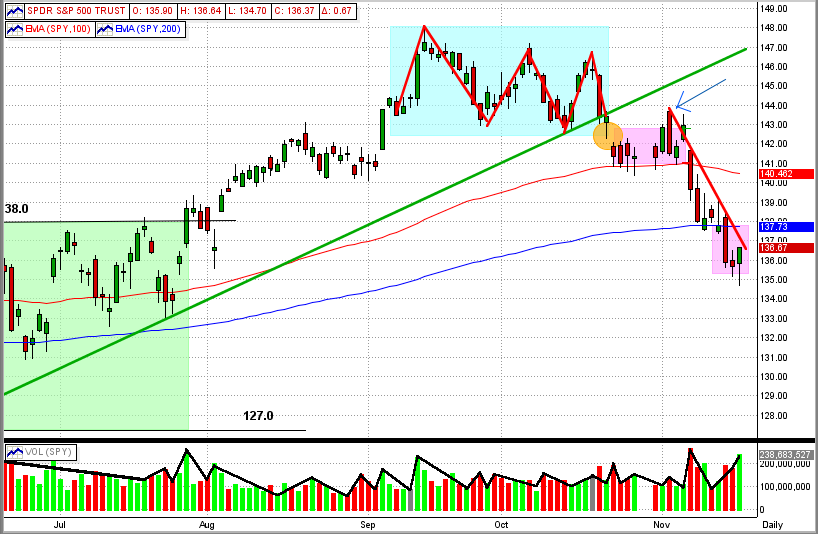
Monday, November 12 2012
This market pullback is scary all right, but is it leading into a full-out bear market ?
- First, let's take a look at how markets normally behave heading into a bear market.
For a bear market to occur, it is usually preceded by most of the following:
1) a 3-6 year bull market,
2) bad news raises its ugly head (economic, political, etc.),
3) the market begins to react negatively to the bad news,
4) we see "topping" behavior in recent market moves,
5) a correction that breaks several important long-term resistance levels occurs,
6) an uptick that challenges some previous downside resistance levels occurs somewhere along the way,
7) a "free fall" begins, and
8) if the "free fall" is widespread (SPY, DIA, QQQ, small/large cap, across sectors, etc), it turns into a secular
bear market.
So, how has the market (as measured by the S&P 500 ETF, SPY) performed according to the above ?
(please refer to the graphs below)
1) we have had a bull market since March 2009 (S&P 500 up over 120%),
2) the economic/political news from all over the world (including the USA) couldn't be much worse,
3) the SPY is down almost 10% from its mid-September high,
4) the SPY (and the DIA and QQQ) have all formed either a triple top or a head-and-shoulders top (red triangles),
5) this last drop had broken the SPY's 6-month up trendline (green line) , its head-and-shoulder's
neckline (black line), its 100-day EMA (red line), and its 200-day EMA (blue line)
- the orange ellipse shows down "gaps"
6) after it broke the neckline, the SPY made a kick up to test that resistance level (blue arrow),
7) we are NOT technically in a "free fall" yet, but the future does not look good, and
8) the SPY barely broke its 200-day EMA and has only been there for one day, but the DIA and QQQ have
experienced very definitive 200-day EMA breaches (shown by the purple ellipses in the graphs).
Technical analysis would lead us to believe that we are on the verge of a serious downturn, but just the slightest good news (like our executive and legislative branches getting things done for our country instead of staying in gridlock for their own personal gains), could change that in a heartbeat. Thankfully, MIPS is much better equipped than us to make long/short decisions in this environment. Besides that, a mechanical mathematical system like MIPS is not too proud or too stubborn to admit a mistake and reverse its decision if it has made an incorrect call (as opposed to human behavior). So, as usual, let's wait for MIPS to tell us what to do next. BTW, all MIPS models are short now.
PS - Take a look at the 4th graph below (labeled 2007) to see how the market was unfolding in 2007.
See any similarities ?
SPY
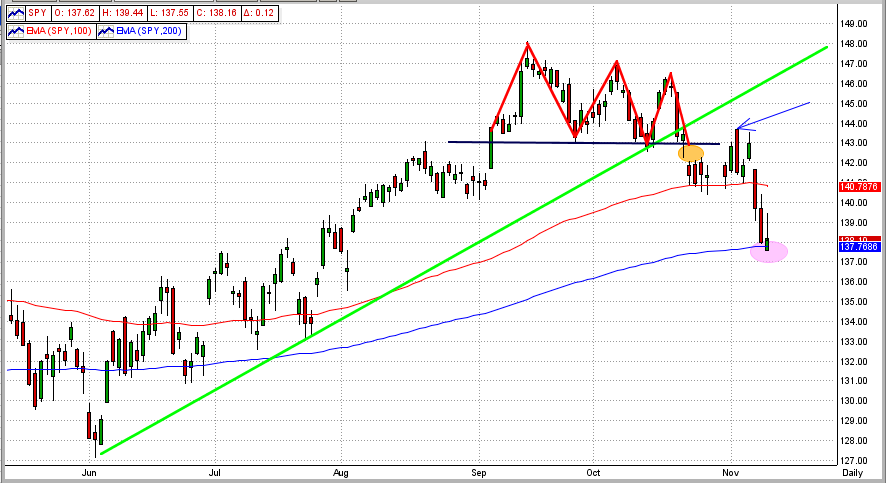 DIA
DIA
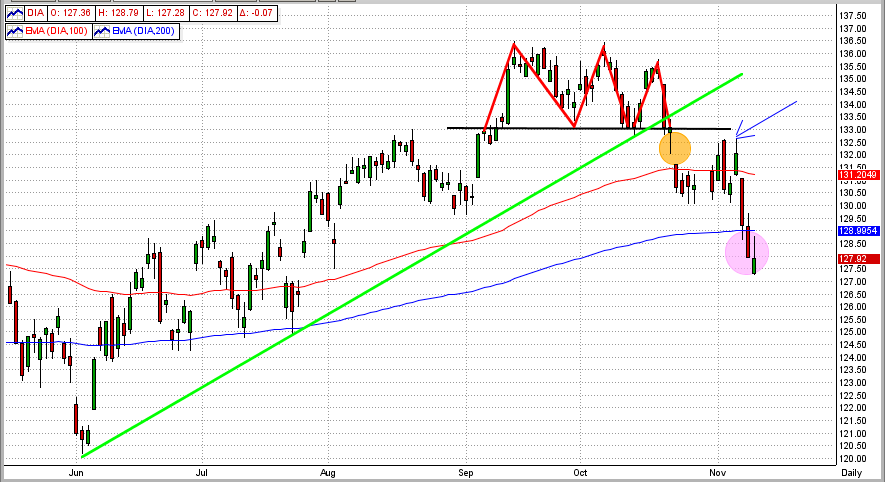
QQQ
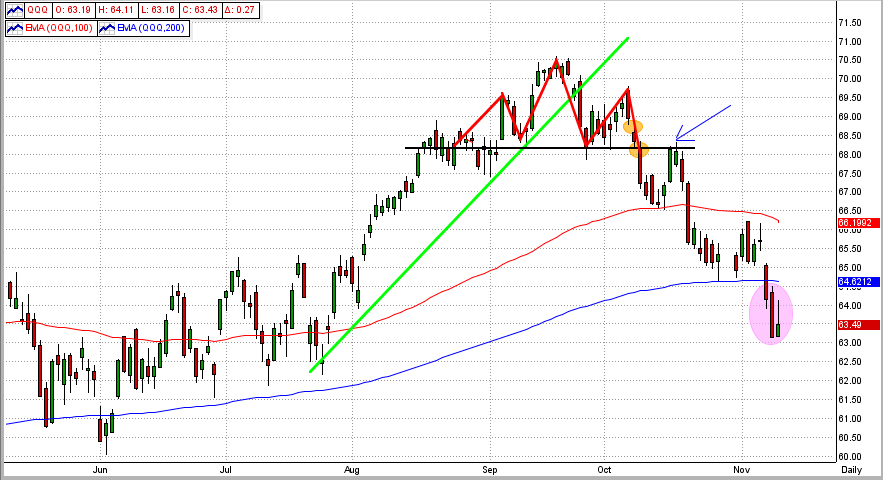
2007
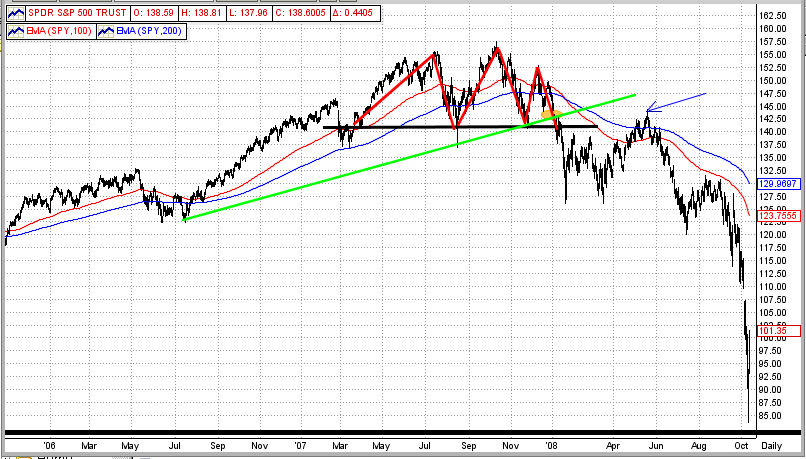
Tuesday, November 06 2012
There is a lot going on in the world these days, the most important of which is tonight's election. There are many possibilities that will follow who wins the election, but that is outside of the scope of the MIPS "commentary" emails.
However, there is one point that we would like to make regarding recent market action. For the last eight days, the market has traded in what we would call "No-Man's-Land" (see graph below). In the last 8-day period (orange box), the SPY has closed between its 50-day EMA on the upside (green line) and its 100-day EMA on the downside (red line). Last Friday, the SPY opened above its 50-day EMA, but fell back into this trading range by the close. Today, however, the SPY closed decisively above its 50-day EMA.
So, the question is: "Does this breakout of the recent trading range mean there is more upside coming or is it just another so-called "bull trap", which sucks the bulls back into long positions only to turn right back to the downside. Of course, no one really knows the answer to this (not enough info), and we will just have to wait and see.
Or, does MIPS see this breakout as a new "Inflection Point" (from down-to-up) ? The answer is "not yet", so again we will just have to wait for MIPS to tell us what to do next, and when.
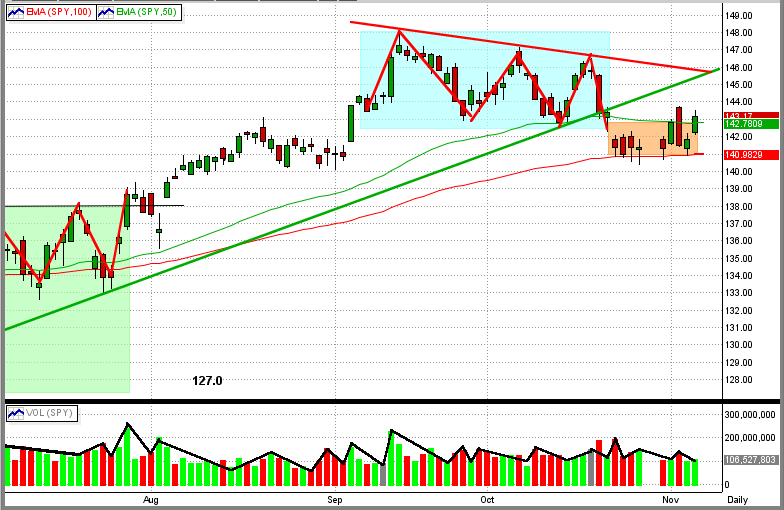
|